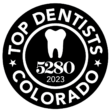Oral pathology is a specialty of dentistry and maxillofacial surgery that diagnoses and treats diseases and disorders of the mouth, lower jaw, head, and neck. Oral pathology investigates the causes, processes, and effects of certain diseases. When things go wrong in your mouth, such as irritation, sensitivity, bleeding, or strange gum symptoms, oral pathology can help you figure out what’s wrong. It is focused on the diagnosis and treatment of oral disorders affecting the maxillofacial and oral regions. Oral pathology is important in dental care because it helps us rapidly detect symptoms and provide appropriate treatment when there is a problem. Your mouth is one of your body’s most important warning systems. Hence, detecting abnormalities early, such as cancer, is key to easier treatment and successful recovery.

Specializing In Oral Pathology
The Importance of Oral Pathology
Gum disease is the leading cause of tooth loss in the United States. This oral condition affects about 9% of adults between the ages of 20 and 64. Dental diseases are highly frequent and afflict millions of people, ranging from cavities to oral cancer. Cleft lip and palate, for example, is a congenital condition, whereas others are caused by poor oral hygiene and other lifestyle factors. Many oral disorders are discovered after they have progressed to the point that treatment choices are limited. This may explain why so many adults lose their teeth before reaching middle age. Early detection is crucial, which is where oral pathology comes in.
This branch of dentistry investigates the causes and symptoms of diseases that affect the teeth, jaws, lips, and other neck and face regions. This department is also responsible for looking into the various treatment options and diagnostic services. Oral pathologists are experts in various conditions, from tooth decay to rare diseases with little or no symptoms. These may include the following:
- Cleft lip and palate – Cleft lip and palate are birth abnormalities that occur when the lip or mouth of a baby does not develop normally during pregnancy. These congenital malformations are collectively known as “orofacial clefts.”
- Torus mandibularis – A bony growth on the lower jaw, beneath and to the side of the tongue. Tori affects approximately 27 out of 1,000 adults.
- Stafne defect – Stafne’s bone cavity is a rare, asymptomatic, unilateral oval-shaped radiolucent lesion below the inferior alveolar canal in the posterior portion of the jaw. This oral disease is most prevalent in men.
- Gingivitis – Gingivitis is a moderate form of gum disease (periodontal disease) that causes irritation, redness, and swelling (inflammation) of the gingiva, the area of your gum that surrounds your teeth. Gingivitis should be taken seriously and treated as soon as possible.
- Periodontitis – Periodontitis is a serious gum infection that can result in severe inflammation of the gums that affects the soft tissue. If left untreated, it can damage the bone that supports your teeth.
- Herpes simplex – Herpes is caused by the herpes simplex virus, which is also known as HSV. This virus is extremely contagious and can be passed through direct contact from one person to another.
- Oral cancer – Also known as mouth cancer, occurs when a tumor forms in the mouth region. These tumors can form on the tongue’s surface, within the cheeks, the roof of the mouth (palate), the lips, or the gums.
- Sjogren’s syndrome – Dry eyes and a dry mouth are two of the most prevalent symptoms of Sjogren’s syndrome, an immune disorder. Other immune system disorders, such as rheumatoid arthritis and lupus, are frequently associated with this condition.
- Burning mouth syndrome – Burning mouth syndrome is a medical term for a burning sensation in the mouth that is persistent or recurrent and has no evident cause. This sensation may appear in your tongue, gums, lips, inside of your cheeks, roof of your mouth (palate), or other regions of your mouth.
Medical specialists in this field collaborate closely with dentists and oral surgeons to diagnose and treat such dental diseases. If you’re referred to an oral pathologist, they may order more testing, such as a biopsy, to evaluate your condition and deliver an accurate diagnosis.
Know the Warning Signs of Oral Cancer
Early detection of abnormalities, such as cancer, is critical for successful treatment and cure. Oral cancer is becoming more prevalent. Your gums, lips, tongue, and other oral cavity tissues may be affected by this potentially fatal condition. You are at higher risk for oral cancer if you have any of the below risk factors:
- Alcohol and tobacco use
- Human Papilloma Virus 16 (HPV16)
- Age 40 years and older
- Prolonged sun exposure and use of tanning beds
Oral cancer can cause changes to the skin lining the mouth or the structures under the skin. Pain does not always occur with maxillofacial pathology and often is not associated with oral cancer. The most accurate way to evaluate these changes is through a biopsy and looking at the tissue under a microscope. The following are signs or changes that you should look for:
- Reddish patches (erythroplakia) or whitish patches (leukoplakia) in your mouth
- Sores or ulcers that fail to heal or bleed easily
- A lump or growth on the skin or under the skin of your mouth
- Chronic sore throat or hoarseness
- Lumps or thick tissue on one side of the mouth or face
- Difficulty with chewing or swallowing
- Changes in hearing, vision, or sensation of the face
- Chronic sinus congestion or nose bleeds
If you notice any warning signs in your mouth, please see your dentist or oral surgeon for an oral examination. We would recommend performing an oral cancer self-examination monthly by:
- Removing any dentures
- Looking and feeling inside the lips and the front of gums
- Tilting your head back to inspect and feel the roof of your mouth
- Pulling the cheek out to see its inside surface as well as the back of the gums
- Pulling out your tongue and look at all of its surfaces
- Feeling for lumps or enlarged lymph nodes (glands) in both sides of the neck, including under the lower jaw
Your dentist and hygienist can often be the first people to note changes in your mouth. Because of this, we strongly recommend regular visits to your dentist once or twice a year. If you’re experiencing any of the warning signs above, please schedule an oral examination.
Oral Cancer Screening
An oral examination is your strongest line of defense against dental issues and the best way to detect oral disease. While there may be no way to avoid cancer, early detection is critical to a successful treatment. Oral cancer screenings can help detect any changes or anomalies before symptoms arise.
As dental specialists, Precision Oral Surgery performs various cancer screening tests to limit the risk of these diseases. Visual examinations, biopsies, and other procedures may be used in oral cancer screenings. These tests have a high success rate in detecting early cancer indications, which improves treatment effectiveness.
Oral cancer treatment can be beneficial if the disease is diagnosed early. In reality, when oral cancer is detected early on, more than 90% of cases are effectively treated.
Oral Pathology for Benign Conditions
Although it is far from its only goal, oral cancer detection and treatment is a significant part of oral maxillofacial pathology. But oral maxillofacial pathology can also treat a variety of non-cancerous abnormalities and disorders.
Here are some examples of common mouth lesions:
- Cold sores – Also referred to as “fever blisters,” this condition is one of the most common oral lesions that patients encounter. The herpes simplex virus causes sores, which appear as tiny blisters on the lips.
- Canker sores – Small lesions that occur at the base of the gums or in the soft tissues of the mouth are known as canker sores. They can cause pain, as well as eating and speaking difficulties. Canker sores, unlike cold sores, are not contagious.
- Oral thrush – Also known as candidiasis, is a yeast infection that causes white patches in the mouth that become red and unpleasant when inflamed. This problem arises when candida fungus proliferates uncontrollably in the mouth, digestive tract, or skin, resulting in a fungal infection.
More is constantly being uncovered about dental disease, thanks to the expertise of oral pathologists and continuous improvements in the field. Many diseases are being diagnosed and treated more quickly and effectively than ever before. Visit us at Precision Oral Surgery if you’re concerned about any oral health issues. If you have a condition, oral pathology will assist you in restoring your oral health.



© 2024 Precision Oral Surgery. | All Rights Reserved